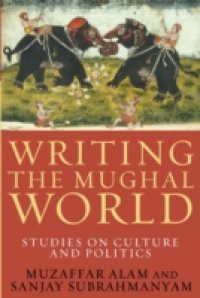Two leading historians of early modern South Asia present nine major joint essays on the Mughal Empire, framed by an important introductory reflection. Stretching from the mid-sixteenth to the early nineteenth century, this Indo-Islamic dynasty came to rule as far as Bengal in the east and Kabul in the west, as high as Kashmir in the north and the Kaveri basin in the south. The Mughals developed a sophisticated, complex system of government facilitating an era of profound artistic and architectural achievement. They promoted the place of Persian culture in Indian society and set the groundwork for South Asia's future trajectory.Making creative use of materials in Persian, Indian vernacular languages, and a variety of European languages, these chapters represent the most significant innovations in Mughal historiography in decades, intertwining political, cultural, and commercial themes while exploring diplomacy, state-formation, history-writing, religious debate, and political thought. They center on confrontations between different source materials that are then reconciled by the authors, enabling readers to participate both in the debate and the resolution of competing claims. The introduction discusses the comparative and historiographical approach of the work and its place within the literature on Mughal rule. Interdisciplinary and cutting-edge, this work adds rich dimensions to research on the Mughal state, early modern South Asia, and the comparative history of the Mughal, Ottoman, Safavid, and other early modern empires.

